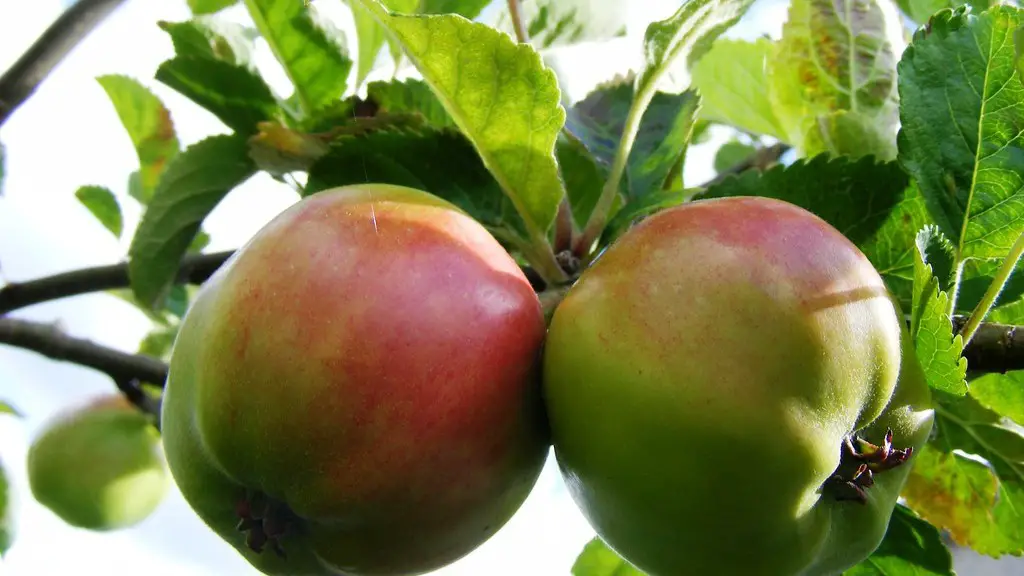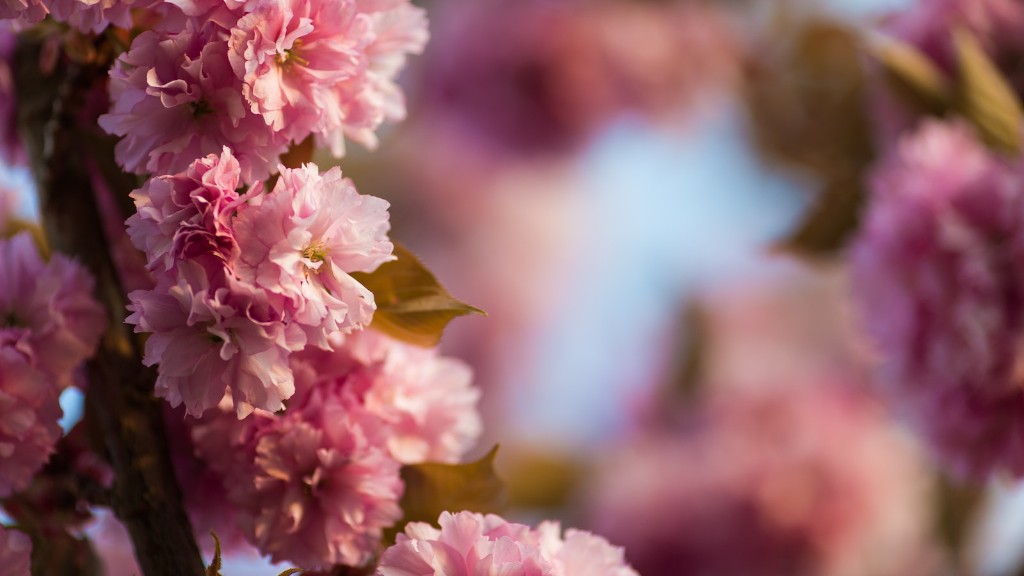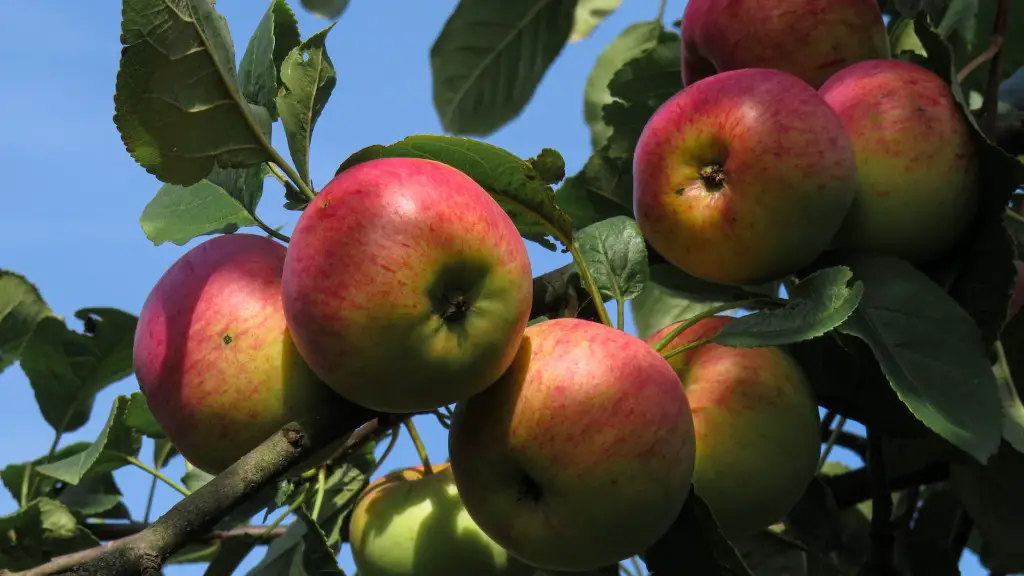Apple tree leaves curl for a variety of reasons. There are bugs such as Leafrollers, yellowheaded fireworm, and Apple Lecanium Beetles which feed on the tree’s leaves and cause them to curl. Additionally, some fungal diseases, such as Downy Mildew, can cause the leaves to curl.
The most common cause of curling, however, is weather. Low humidity and sudden changes in temperature — like days when the temperature can jump from 60 degrees to 90 degrees in a few hours — cause intense stress on the trees and can lead to wilting and curling of leaves.
Excessive sunlight, or too much water or too little water can also lead to leaves curling. Irrigation to correct water deficiency can help the tree to survive, however, if the cause of the problem is too much or too little sunlight, appropriate corrective measures need to be taken.
Apple tree leaves will often curl when attacked by the Curly Midge, which is a small fly that lays eggs on the same branch as a group of leaves. Once the eggs hatch, the larvae feed on the leaves and they begin to curl. Proper chemical treatments can help to reduce the infestation of the Curly Midge.
A number of environmental stresses, such as drought, poor soil fertility and some herbicides, can also lead to a curling of the leaves. Since environmental stresses are often caused by human activities, it is important to be aware of the potential stressors and maintain proper care of the tree in order to prevent leaves from curling.
Finally, certain pests, such as aphids, can cause leaves to curl and twist. Generally, the symptoms of this type of problem are curled leaves and a sticky substance on the underside, as well as honeydew produced by the aphids.
Solutions to Prevent Apple Tree Leaves from Curling
The best way to prevent apple tree leaves from curling is to ensure proper care and maintenance of the tree. Proper watering — not too often or too little — is essential and should be done during the early hours of the morning to prevent the loss of moisture in the hot sun.
Fertilization is also essential, and the tree should be fertilized twice a year — once in spring and once in fall. Additionally, it is important to monitor and reduce environmental stresses caused by human activities, and to promptly identify and treat any pest that may appear.
Finally, any chemical treatments should be done with great caution, as they may have an adverse effect on the tree’s health. Before applying any chemical, it is important to consult a professional and follow the instructions carefully.
How to Treat Trees with Curling Leaves
If the leaves of an apple tree are already wilting and curling, the tree should be treated as soon as possible. Prune away any dead or loosely hanging leaves and remove all infected leaves. Reduce irrigation water, especially during the heat of summer, and remove weeds from the tree’s root zone.
Additionally, a fungicide can be used to protect the leaves from fungal diseases and other pests. Planting a new or different variety of apple tree may also help, as some varieties are more resistant to pests and diseases than others.
If the problem persists, then a soil analysis may be necessary to determine if the soil is lacking in nutrients or if there is an imbalance of pH. An appropriate course of fertilizer may be applied to help reduce the severity of the curling leaves.
What Causes Apple Tree Leaves to Curl in Winter?
Apple trees are fairly cold hardy and can tolerate temperatures down to -25 °F. While in winter the leaves may curl due to cold temperatures, this is usually not a cause for concern as the tree will outgrow the leaves and will produce new ones in the spring.
However, if the leaves curl during a period of warm weather in winter, then the tree may be affected by pests, diseases, excessive sunlight, or too much or too little water. In this case, treatment as indicated above will be necessary to prevent serious damage to the tree.
Types of Curl Found on Apple Tree Leaves
Apple tree leaves may curl in multiple types of patterns, depending on the cause. Some of the most common types of curl are: Distortion, Rolled, Blister or Tentiform, or Puckering.
Distortion is caused by a deficiency in either nitrogen or magnesium, and leaves become rolled and small. Rolled is usually caused by aphids or mites and the leaves curl towards their tips and become discolored. Blister or Tentiform is caused by the Tentiform Leafminer and the leaflets curl into tent-shaped structures. Puckering is caused by too much water and the leaves curl downwards.
Importance of Pruning Trees with Curled Leaves
Pruning is an essential part of apple tree care, as it helps to remove dead or diseased branches and encourage healthy growth. Pruning will help to remove the curling leaves, loosen the canopy of the tree, and provide much-needed air and light circulation to the lower branches.
It’s important to avoid heavy pruning of trees with curled leaves, as doing so could further weaken the tree. Instead, light pruning and removal of infested leaves should be done to help the tree recover from any stress or disease.
Use of Insecticides to Control Apple Tree Leaf Curl
Insecticides can be used to control pests that cause the leaves of an apple tree to curl and twist. Chemical insecticides may be used to treat the affected areas, but it is important to read the label carefully and follow the instructions carefully.
Organic methods of pest control may also be used. These can include planting insect-repelling flowers near the trees, using a blend of mineral oils, and introducing beneficial insects such as ladybugs and lacewings that will feed on pests.
Using a combination of chemical and organic treatments can greatly reduce the flexibility and number of pests, and can help the apple tree to maintain healthy leaves and improve its overall health.




